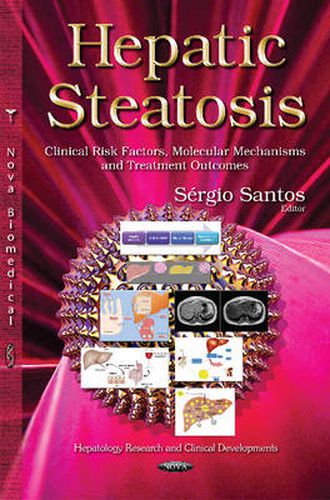Readings Newsletter
Become a Readings Member to make your shopping experience even easier.
Sign in or sign up for free!
You’re not far away from qualifying for FREE standard shipping within Australia
You’ve qualified for FREE standard shipping within Australia
The cart is loading…






In the last few years, human metabolic disorders have become some of the most prevalent and prejudicial diseases worldwide. Hepatic steatosis, among many health problems, has several risk factors related to the disease prognosis such as obesity, nutritional problems, diabetes, hypertension, hyperuricemia, and even sleep apnea. Alcohol abuse also can lead to a severe liver-steatosis state. The progression of hepatic steatosis can lead to complications such as cryptogenic cirrhosis and hepatocellular carcinoma. Drug therapy has instead been focused on the mitigation of risk factors, however new potential therapeutic perspectives are being discussed. This book presents the origins, diagnosis and epidemiology of hepatic steatosis with new perceptions. The authors also aimed to show the molecular basis and signaling involved in liver disorders, discussing the inflammatory process, lipid metabolism and angiogenesis mechanisms. The role of nutrition in the treatment and development of steatosis was also presented and new advances were highlighted. Recent studies revealed the need for the use of bariatric surgery, functional foods and the modulation of endogenous systems, such as the sirtuins and renin-angiotensin systems, to treat liver disease. In this context, we aimed to introduce, review and discusses one of the most widespread metabolic disorders in the world: hepatic steatosis and its repercussions.
$9.00 standard shipping within Australia
FREE standard shipping within Australia for orders over $100.00
Express & International shipping calculated at checkout
In the last few years, human metabolic disorders have become some of the most prevalent and prejudicial diseases worldwide. Hepatic steatosis, among many health problems, has several risk factors related to the disease prognosis such as obesity, nutritional problems, diabetes, hypertension, hyperuricemia, and even sleep apnea. Alcohol abuse also can lead to a severe liver-steatosis state. The progression of hepatic steatosis can lead to complications such as cryptogenic cirrhosis and hepatocellular carcinoma. Drug therapy has instead been focused on the mitigation of risk factors, however new potential therapeutic perspectives are being discussed. This book presents the origins, diagnosis and epidemiology of hepatic steatosis with new perceptions. The authors also aimed to show the molecular basis and signaling involved in liver disorders, discussing the inflammatory process, lipid metabolism and angiogenesis mechanisms. The role of nutrition in the treatment and development of steatosis was also presented and new advances were highlighted. Recent studies revealed the need for the use of bariatric surgery, functional foods and the modulation of endogenous systems, such as the sirtuins and renin-angiotensin systems, to treat liver disease. In this context, we aimed to introduce, review and discusses one of the most widespread metabolic disorders in the world: hepatic steatosis and its repercussions.